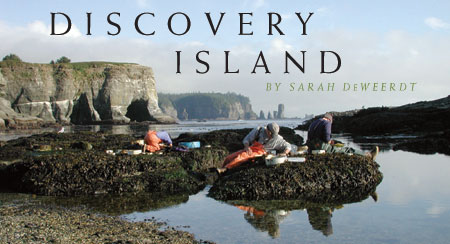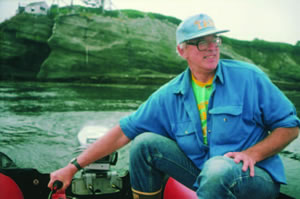

The Keystone Scientist
Robert Paine’s 1969 paper, “A note on trophic complexity and community stability,” was only three pages long, but it set off a revolution—and, for a time, a battle—within the field of ecology.
In the paper, which ran as a Letter to the Editor in the back of the journal The American Naturalist, Paine coined the term “keystone species” to describe the role that a Pacific Northwest starfish and a large snail from Australia’s Great Barrier Reef play in their respective ecosystems.
When these two predators were removed, it caused a population explosion of certain of their prey species that had disastrous consequences for the rest of the ecosystem.

He borrowed the term from architecture. “The keystone, being critical to the structural integrity of an arch, just seemed natural,” Paine recalls.
What followed was overuse of an original idea: an explosion of keystone species. Soon there were keystone predators and keystone prey, keystone pollinators and keystone mutualists and keystone modifiers—everything but keystone key chains.
The concept was so popular, in fact, that it soon had a number of critics. “The keystone species concept had become nothing more than a platitude,” says L. Scott Mills, professor of wildlife population ecology at the University of Montana, who was the lead author of a paper advocating the total abandonment of the term.
Instead, in 1994 the United Nations convened a seminar to see if the term could be saved. (Paine spent the first day scribbling furiously what everyone assumed were serious ecological thoughts. At the end of the day it turned out he’d written a tongue-in-cheek dialogue summarizing the various partisans’ stances.)
In Paine’s original formulation, a keystone species was specifically a predator. The seminar participants hammered out a new definition that was true to the spirit of Paine’s original: a keystone species is “one whose impact on its community or ecosystem is large, and disproportionately large relative to its abundance.”
So far, that new formulation seems to be sticking. “It’s a brilliant metaphor, and it’s right,” Mills says now. “It captures a basic concept that, the more we study and understand about ecosystems, rings true.”
Now comes the really tricky part: figuring out which species are keystones before they’ve disappeared.
—Sarah DeWeerdt
Go To: Page 1 | Page 2 | Page 3